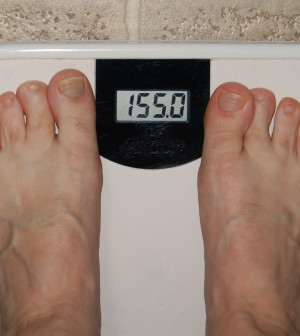- Skip Storing This Everyday Product in the Fridge Door
- Green Tea + B3 Pairing May Boost Brain Health
- Navigating Your Midlife Crisis: Embracing New Possibilities
- City Raccoons Showing Signs of Domestication
- Mapping the Exposome: Science Broadens Focus to Environmental Disease Triggers
- One Week Less on Social Media Linked to Better Mental Health
- Your Brain Changes in Stages as You Age, Study Finds
- Some Suicide Victims Show No Typical Warning Signs, Study Finds
- ByHeart Formula Faces Lawsuits After Babies Sickened With Botulism
- Switch to Vegan Diet Could Cut Your Greenhouse Gas Emissions in Half
U.S. Teens Begin to Slim Down, Study Suggests


MONDAY, Sept. 16American teens may be getting the message that carrying excess weight isn’t good for them.
New research shows that the number of obese teens leveled off and the rate of overweight teens dropped slightly between 2005-’06 and 2009-’10.
Teens reported eating more fruits and vegetables, eating breakfast on weekdays more often, and being more active. They also ate fewer sweets, drank fewer sweetened beverages and spent less time watching TV, according to the study.
“Over the past four or five decades, we’ve seen diets getting worse, physical activity on the decline and more obese teens,” said the study’s lead author, Ronald Iannotti, chairman and professor of exercise and health sciences at the University of Massachusetts, Boston. “We would see the same pattern decade after decade. The good news is that it looks like in the first decade of this century, things are starting to get better.”
“At the same time, we still have a ways to go,” said Iannotti, who was with the Eunice Kennedy Shriver National Institute of Child Health and Human Development when he began the study. “The recommendation is for children and teens to get 60 minutes of vigorous exercise every day — or at least five days during the week — and the majority of kids aren’t getting that much. The fruit and vegetable recommendation is for at least five a day, and, again, the majority of kids aren’t meeting that goal.”
Results of the study were released online Sept. 16 in the journal Pediatrics.
The study looked at more than 34,000 adolescents in grades 6 through 10 during three time periods. The first group was studied from 2001-’02, the second from 2005-’06 and the final group from 2009-’10.
The students filled out questionnaires annually. They were asked about physical activity, foods they ate, whether they ate breakfast, current weight and height, and their screen-time habits.
The screen-time question included television, playing video games and computer use. Iannotti said it’s important to note that computer use changed quite a bit over the study periods, so they may not have captured the full impact of computer time. In addition, he said the teens weren’t asked about cellphone use, which changed significantly over the study periods.
In the earliest group, 14.9 percent were overweight and 10.3 percent were obese. By the second period, those numbers had jumped to 17 percent and 12.7 percent, respectively. But for the most recent group, the rate of overweight teens dropped slightly to 16.6 percent, and the rate of obesity leveled off at 12.7 percent.
When looked at by gender, boys made more significant gains than girls. The rate of overweight and obesity leveled off for girls between the second and third periods. But the boys went from 18.4 percent overweight in the second period to 17.4 percent in the third. Their levels of obesity dropped very slightly, from 14.5 percent to 14.4 percent.
During the study, physical activity rose slightly. TV time dropped from an average of about 3.1 hours to 2.4. However, video game and computer use increased slightly.
Fruit and vegetable consumption increased during the study, with teens reporting they consumed some produce five or six days a week. Consumption of sweet foods and sweetened beverages decreased. In addition, slightly more kids ate breakfast.
Dr. Robert Gensure, a pediatric endocrinologist at the Children’s Hospital of Montefiore in New York City, found the study results refreshing.
“I think it’s great to have some good news for a change, particularly in adolescents,” Gensure said. “They measured some of the things that would be considered the ‘usual suspects,’ and it looks like those were trending in the right direction.”
“To some extent, this validates public-health campaigns and other efforts that are being made,” he said. “But we need to know which interventions are working.”
Sharon Strohm, manager of clinical nutrition and diabetes education at Children’s Hospital of Pittsburgh, said public-health campaigns and awareness programs need to continue.
“As many times as you can deliver the message of healthy living and repeat it, that helps,” she said.
Parents shouldn’t forget they serve as role models, even for their teens, Strohm said. “If your child sees you trying to eat right and be healthy, it does rub off on them,” she said.
Iannotti said parents should try to encourage physical activity with their children. “Go for a walk after dinner or do something else active as a family, and you’ll cut down on screen time too,” he said.
More information
The Nemours Foundation KidsHealth website offers food and activity advice tailored to teens.
Source: HealthDay
Copyright © 2025 HealthDay. All rights reserved.










